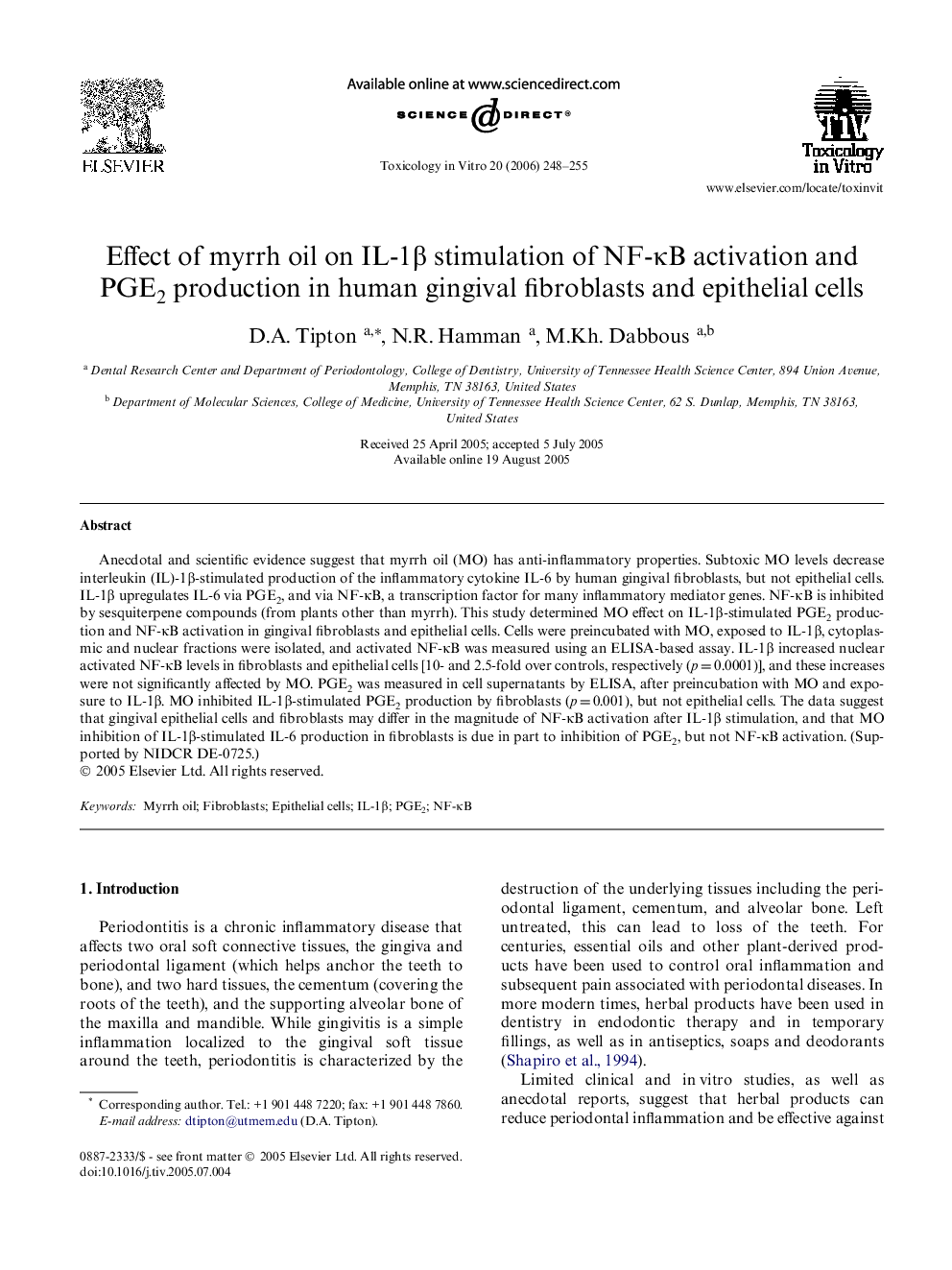| Article ID | Journal | Published Year | Pages | File Type |
|---|---|---|---|---|
| 2603955 | Toxicology in Vitro | 2006 | 8 Pages |
Anecdotal and scientific evidence suggest that myrrh oil (MO) has anti-inflammatory properties. Subtoxic MO levels decrease interleukin (IL)-1β-stimulated production of the inflammatory cytokine IL-6 by human gingival fibroblasts, but not epithelial cells. IL-1β upregulates IL-6 via PGE2, and via NF-κB, a transcription factor for many inflammatory mediator genes. NF-κB is inhibited by sesquiterpene compounds (from plants other than myrrh). This study determined MO effect on IL-1β-stimulated PGE2 production and NF-κB activation in gingival fibroblasts and epithelial cells. Cells were preincubated with MO, exposed to IL-1β, cytoplasmic and nuclear fractions were isolated, and activated NF-κB was measured using an ELISA-based assay. IL-1β increased nuclear activated NF-κB levels in fibroblasts and epithelial cells [10- and 2.5-fold over controls, respectively (p = 0.0001)], and these increases were not significantly affected by MO. PGE2 was measured in cell supernatants by ELISA, after preincubation with MO and exposure to IL-1β. MO inhibited IL-1β-stimulated PGE2 production by fibroblasts (p = 0.001), but not epithelial cells. The data suggest that gingival epithelial cells and fibroblasts may differ in the magnitude of NF-κB activation after IL-1β stimulation, and that MO inhibition of IL-1β-stimulated IL-6 production in fibroblasts is due in part to inhibition of PGE2, but not NF-κB activation. (Supported by NIDCR DE-0725.)
